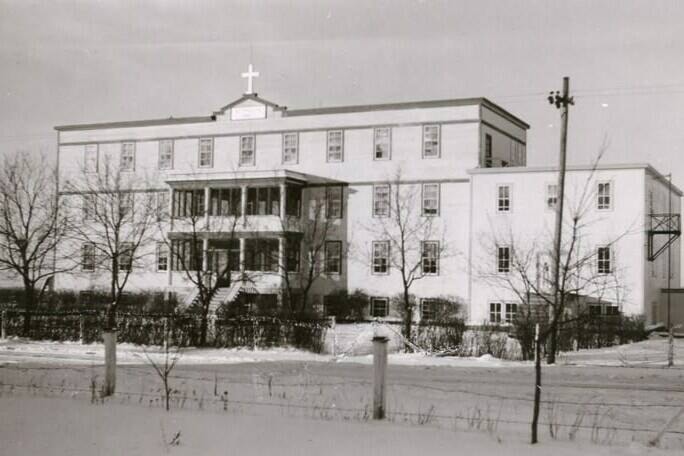Warning: The details in this story may be triggering. Supports are available at the Indian Residential School Survivors Society (IRSSS) at 1-800-721-0066.
Members of a First Nation in eastern Saskatchewan held each other and wept as they looked at photos from ground-penetrating radar that found 54 potential graves at the site of two former residential schools.
“It’s going to be a very tough time for our community, knowing that we had unmarked graves in our community, in our common areas, that we drive every day, that we walk every day,” said Keeseekoose First Nation Chief Lee Kitchemonia on Tuesday.
“These could potentially be murdered children, hidden,” Kitchemonia said. “We don’t know any of these answers.”
The graves were discovered on the grounds of the St. Philip’s and Fort Pelly residential schools on the First Nation’s land near Kamsack, about 265 kilometres northeast of Regina and near the boundary with Manitoba. Both were run by the Catholic Church.
Community members and survivors filled the Keeseekoose school gymnasium to hear about the findings. Aerial photos taped to the walls showed spots where possible graves were detected.
There were also photos of students who attended the schools. Community members pointed to siblings, friends and parents they spotted in the images.
Ted Quewezance, project leader, said the ground-penetrating radar had 42 hits suggesting the possibility of unmarked graves on the Fort Pelly site and another 12 at St. Philip’s school. Quewezance said the efforts were paused due to snow, so there could be more graves.
Quewezance, a former chief who has spoken publicly about the abuse he experienced at the schools, said the discovery supports what people from the community have been saying for years.
“It was not that they could not hear, but they did not believe our survivors,” Quewezance said.
Fort Pelly school ran from 1905 to 1913. The National Centre for Truth and Reconciliation says the principal was fired in 1911 after it was reported he was drunk and threatening everyone at the school.
The Truth and Reconciliation Commission found St. Philip’s school, open from about 1927 to 1969, had a widespread problem with sexual and physical abuse, which led to the dismissal of a school supervisor during the school’s final decade.
The commission, which documented stories from survivors and issued a final report in 2015, has a record of two student deaths at St. Philip’s and two at Fort Pelly.
The commission’s report included Elaine Durocher, who said “the abuse started right away” when she entered St. Philip’s school.
“They were there to discipline you, teach you, beat you, rape you, molest you, but I never got an education,” she said.
St. Philip’s survivor Fred Brass told the commission that he lived in constant fear of abuse.
“I saw my brother with his face held to a hot steaming pipe and then getting burned on the arm by a supervisor,” he said.
Grand Chief RoseAnne Archibald of the Assembly of First Nations said the institutions tore apart families.
“There are children who never made it home,” she said. “Particularly the 54 little ones we are holding space for today. They are among the thousands of our little ones who didn’t make it home.”
An estimated 150,000 First Nations, Inuit and Métis children attended residential schools. The commission documented at least 4,100 deaths.
Crown-Indigenous Relations Minister Marc Miller, who appeared Tuesday by video, said it was important he witness “Canada’s ongoing shame in the face of these findings.” He said the discovery is a painful reminder of the abuse that was suffered and how much more needs to be done.
“To survivors and your families — I believe you and Canada believes you,” Miller said.
Saskatchewan Premier Scott Moe posted on social media that the province was mourning with the Keeseekoose people.
Chief Bobby Cameron of the Federation of Sovereign Indigenous Nations said those who ran the schools — including the Catholic church — must return all records to survivors, descendants and their communities to help put identities to the possible graves.
He also said Pope Francis must apologize on a residential school site in Canada.
Mary Culbertson, Saskatchewan’s Treaty Commissioner who is from Keeseekoose, said residential schools are a reflections of broken treaties that promised a school house and teacher on reserves.
“We inherited a legacy that we didn’t want.”
The Indian Residential Schools Resolution Health Support Program has a hotline to help residential school survivors and their relatives suffering trauma invoked by the recall of past abuse. The number is 1-866-925-4419.
—Mickey Djuric, The Canadian Press
